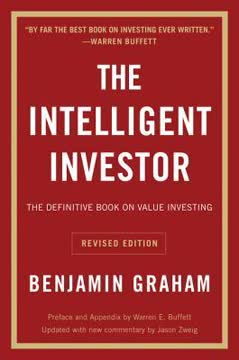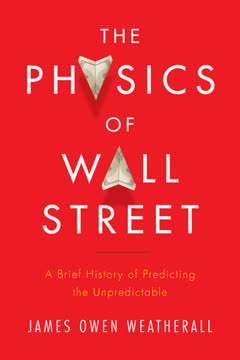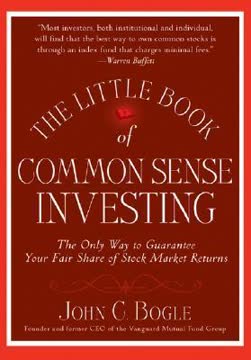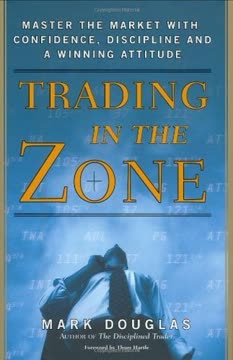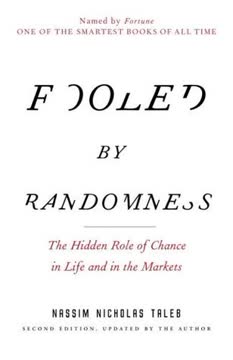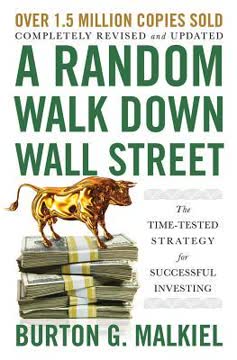つの重要なポイント
1. 株式市場は心理学と認知バイアスに影響される
「投資家は(アラン・グリーンスパンとロバート・シラーが有名にしたフレーズを借りると)非合理的な熱狂に陥ることもあれば、逆に非合理的な絶望に陥ることもある。」
心理的要因は株式市場の行動に大きな影響を与える。投資家は様々な認知バイアスに陥りやすく、それが非合理的な意思決定を引き起こすことがある。これらのバイアスには以下が含まれる:
- 確証バイアス:既存の信念を確認する情報を求める
- アンカリング効果:一つの情報に過度に依存する
- 損失回避:同等の利益よりも損失を強く感じる
- 群集心理:個別の分析よりも群衆に従う
感情的反応は市場イベントに対して過剰反応を引き起こし、ボラティリティや市場の非効率性を生むことがある。これらの心理的要因を理解することで、投資家はより合理的な意思決定を行い、他者のバイアスによる市場の非効率性を利用することができる。
2. テクニカル分析は市場の動きを予測する上で限界がある
「テクニカル分析は、予測が無価値であるか、せいぜい取引コストのために利用できないほどわずかにチャンスよりも良い程度の擬似科学とほとんど区別がつかない。」
テクニカル分析は、価格チャートやパターンを研究して将来の動きを予測する手法であるが、いくつかの限界がある:
- 過去のパフォーマンスは将来の結果を保証しない
- パターンは解釈や確証バイアスに左右される
- 多くのテクニカル指標は恣意的なルールに基づいている
一部の研究では、特定のテクニカル戦略が中程度の超過リターンをもたらすことが示唆されているが、これらの戦略の効果は多くの人が採用するにつれて減少する傾向がある。効率的市場仮説は、予測可能なパターンがすぐに裁定取引されてしまい、長期的にはテクニカル分析が効果を失うと主張している。
3. ファンダメンタル分析は株価評価においてより堅実なアプローチを提供する
「バリュー投資は中程度のリターンをもたらすようだ。」
ファンダメンタル分析は、企業の財務健全性、競争力、成長見通しを評価してその内在価値を決定する手法である。このアプローチにはいくつかの利点がある:
- 企業の価値を包括的に把握できる
- 基本的なビジネス要因に基づいた長期的な投資判断が可能
- 市場を上回る可能性のある割安株を見つけることができる
ファンダメンタル分析で使用される主要な指標には以下が含まれる:
- 株価収益率(P/E比)
- 株価純資産倍率(P/B比)
- 配当利回り
- キャッシュフロー分析
ファンダメンタル分析は完璧ではないが、テクニカル分析と比較して株価評価のためのより堅実なフレームワークを提供する。
4. 効率的市場仮説は株式選択の有効性に挑戦する
「現在の株価がすでに利用可能なすべての情報を反映している場合(つまり、その情報が第1章の意味で共通の知識である場合)、将来の株価は予測不可能でなければならない。」
**効率的市場仮説(EMH)**は、株価がすべての利用可能な情報を反映しているため、株式選択を通じて市場を一貫して上回ることは不可能であると主張する。この仮説の主な含意には以下が含まれる:
- 新しい情報は迅速に株価に反映される
- アクティブ運用はパッシブインデックス投資を一貫して上回ることは難しい
- 市場の異常やパターンは発見されて利用されるとすぐに消える
しかし、EMHには批判もある。一部の人々は以下の点を主張している:
- 短期的には市場は非効率的であることがある
- 行動バイアスが持続的な非効率性を生むことがある
- 特定の投資家(例:ウォーレン・バフェット)は一貫して市場を上回っている
市場の効率性に関する議論は、投資戦略や学術研究に影響を与え続けている。
5. オプションとリスク管理は成功する投資に不可欠である
「洗濯機が壊れた場合に備えて保険に加入するのと同様に、株が下落した場合に備えてオプションを購入することがある。」
オプションは、投資家に柔軟性とリスク管理のツールを提供する金融商品である。主な概念には以下が含まれる:
- プット:特定の価格で株を売る権利
- コール:特定の価格で株を買う権利
- ヘッジ:オプションを使用して潜在的な損失を保護する
オプションを理解し活用することで、投資家は以下のことが可能になる:
- 下方リスクを限定する
- 既存のポジションから収益を生む
- 限られた資本で市場の動きを投機する
しかし、オプションには独自のリスクと複雑さも伴うため、慎重な分析とリスク管理戦略が必要である。
6. ポートフォリオの分散投資はリスクとリターンのバランスを取る鍵である
「分散ポートフォリオのために株を選ぶ際、投資家は一般的に負の共分散を探す。」
分散投資は、投資ポートフォリオのリスクを管理するための重要な戦略である。主な原則には以下が含まれる:
- 様々な資産に投資して全体のポートフォリオリスクを低減する
- 資産間の負の相関を求めてボラティリティを最小化する
- 個々の投資目標に基づいてリスクとリターンのバランスを取る
分散投資の利点:
- 個別の株やセクターのパフォーマンスの影響を軽減する
- 異なる成長機会に対するエクスポージャーを提供する
- 時間をかけてより安定したリターンを維持するのに役立つ
ハリー・マーコウィッツが開発した現代ポートフォリオ理論は、期待リターンとリスク許容度に基づいて最適なポートフォリオを構築するための数学的フレームワークを提供する。
7. 市場の複雑性と相互接続性が株価の動きに影響を与える
「投資家、企業、ミューチュアルファンド、ブローカー、アナリスト、メディアは、大規模で曖昧に定義されたネットワークを通じて接続されており、そのノードは接続されているノードに影響を与える。」
株式市場は複雑なシステムであり、以下の特徴がある:
- 投資家、機関、情報源の相互接続されたネットワーク
- 株価に影響を与える様々な要因間の非線形関係
- 市場の動きを増幅または抑制するフィードバックループ
この複雑性は以下をもたらす:
- 市場の動きを正確に予測することの難しさ
- 予期しないパターンや行動の出現
- 連鎖的な影響や市場全体のシフトの可能性
市場の複雑性を理解することで、投資家は単純なモデルの限界を認識し、投資戦略における適応性の重要性を理解することができる。
8. 極端な価格変動は正規分布ではなくべき法則に従う
「実際、株価の非常に大きな変動は、正規曲線の尾部ではなく、いわゆるべき法則によって最もよく説明されるという証拠がある。」
べき法則分布は株式市場のリターンに重要な意味を持つ:
- 極端なイベント(暴落やバブル)は正規分布が予測するよりも頻繁に発生する
- 正規分布に基づくリスクモデルはテールリスクを過小評価する可能性がある
- 伝統的なポートフォリオ理論はこれらの分布を考慮して調整する必要がある
市場におけるべき法則分布の特徴:
- 異なる時間スケールにわたる自己相似性
- 極端なイベントの確率が高いファットテール
- 市場行動の突然の大規模なシフトの可能性
これらの分布を理解することで、投資家は極端な市場イベントに備え、これを利用することができる。
9. 経済的不平等とメディアの影響が市場のダイナミクスに影響を与える
「べき法則が経済、メディア、政治の力に関連する可能性があることを示唆する数学的な言葉遊び以上のものがある。」
経済的不平等とメディアの影響は市場のダイナミクスを形成する上で重要な役割を果たす:
- 富の集中は投資パターンや市場の流動性に影響を与える
- メディアの報道は市場のトレンドや投資家の感情を増幅する
- 政治的および経済的な権力構造は規制環境に影響を与える
主な考慮事項:
- 所得格差が消費支出や企業利益に与える影響
- 市場の物語を作り出し、維持するメディアの役割
- 規制の変化が市場のダイナミクスに与える可能性
投資家は市場のトレンドを分析し、投資判断を行う際に、これらの広範な社会的要因を認識する必要がある。
10. 市場効率性の逆説的な性質は単純な見解に挑戦する
「効率的市場仮説の真偽は不変ではなく、投資家の信念に大きく依存する。」
市場効率性の逆説的な性質は、投資家の信念と市場行動の自己言及的な側面から生じる:
- ほとんどの投資家が市場が効率的であると信じる場合、市場は効率的でなくなる可能性がある
- ほとんどの投資家が市場が非効率的であると信じる場合、その行動が市場をより効率的にする可能性がある
この逆説は以下を強調する:
- 市場効率性の動的な性質
- 市場行動を形成する上での投資家心理の重要性
- 市場行動の静的モデルの限界
この逆説を認識することで、投資家は市場分析と投資戦略においてより微妙で適応的なアプローチを維持することができる。
最終更新日:
FAQ
What's A Mathematician Plays The Stock Market about?
- Market Behavior Exploration: The book examines the psychological and mathematical aspects of stock market investing, using both personal anecdotes and broader market analysis.
- Behavioral Finance Focus: It highlights how emotions like fear and greed can lead to irrational investor behavior.
- Mathematical Insights: Paulos uses mathematical concepts to explain market phenomena, making complex ideas accessible to readers without a strong math background.
Why should I read A Mathematician Plays The Stock Market?
- Unique Perspective: John Allen Paulos combines mathematics with personal experience, offering a fresh take on stock market investing.
- Educational Value: The book educates readers on behavioral finance, helping them understand common psychological pitfalls in investing.
- Engaging Narrative: Paulos's storytelling, infused with humor, makes the book enjoyable while providing serious insights into market dynamics.
What are the key takeaways of A Mathematician Plays The Stock Market?
- Market Psychology: Understanding how emotions affect investment decisions is crucial for successful trading.
- Fundamentals Importance: The book stresses the significance of fundamental analysis, such as understanding P/E ratios and present value.
- Overconfidence Caution: Investors should be wary of biases and the tendency to overestimate their predictive abilities in the market.
What is the Efficient Market Hypothesis in A Mathematician Plays The Stock Market?
- Definition of EMH: The hypothesis posits that stock prices reflect all available information, making it impossible to consistently achieve higher returns than the market average.
- Investor Implications: If markets are efficient, strategies like technical analysis may not yield excess returns.
- Historical Context: Paulos links the origins of this hypothesis to economists like Eugene Fama and Paul Samuelson.
How does John Allen Paulos explain "common knowledge" in the stock market?
- Definition: Common knowledge is information known by all parties and acknowledged as known by others.
- Market Reactions: It helps explain market sell-offs and bubbles, as investors react to perceived reactions of others.
- Illustrative Example: Paulos uses a parable about unfaithful husbands to show how common knowledge can lead to collective actions impacting market behavior.
What is the significance of the P/E ratio in A Mathematician Plays The Stock Market?
- Valuation Understanding: The P/E ratio helps assess whether a stock is overvalued or undervalued based on its earnings.
- Investor Expectations: A high P/E ratio indicates high expectations for future growth, while a low P/E suggests lower expectations.
- Comparison Tool: Paulos emphasizes comparing a company's P/E ratio to its historical values and those of similar companies.
What does "averaging down" and "catching a falling knife" mean in investing?
- Averaging Down: This strategy involves buying more shares of a stock as its price declines, hoping for a rebound.
- Falling Knife Risk: The phrase warns against investing in a declining stock without understanding the reasons for its drop.
- Personal Anecdote: Paulos shares his experience with WorldCom to illustrate the pitfalls of this strategy and emotional biases.
How does A Mathematician Plays The Stock Market address psychological biases in investing?
- Cognitive Illusions: Paulos discusses biases like confirmation bias and the anchoring effect that distort decision-making.
- Performance Impact: These biases often lead to irrational choices, such as holding onto losing stocks.
- Awareness and Mitigation: The book encourages awareness of these biases and adopting a more analytical approach to investing.
What are some common scams in the stock market according to John Allen Paulos?
- Pump and Dump: Scammers inflate a stock's price through misleading promotions before selling off their shares.
- Short and Distort: This involves short-selling a stock and spreading negative rumors to drive the price down.
- Online Influence: Paulos highlights how online forums can be breeding grounds for such scams, spreading misinformation rapidly.
What is the "rule of 72" mentioned in A Mathematician Plays The Stock Market?
- Doubling Time Calculation: The rule estimates the years required to double an investment at a fixed annual rate of return.
- Formula Explanation: Divide 72 by the annual interest rate to find the doubling time.
- Practical Application: It helps investors quickly assess potential growth without complex calculations.
How does Paulos illustrate the concept of risk in investing?
- Personal Anecdotes: He shares experiences with WorldCom to illustrate risks of investing heavily in a single stock.
- Mathematical Analysis: Uses concepts like standard deviation to quantify risk, aiding in informed investing.
- Practical Examples: Provides strategies like diversification to mitigate potential losses.
What are the best quotes from A Mathematician Plays The Stock Market and what do they mean?
- "Double entry bookkeeping...": Reflects appreciation for accounting practices, emphasizing understanding financial systems.
- "Investing is as much about psychology...": Highlights the interplay between emotions and market behavior.
- "The market is a different sort of beast...": Suggests traditional models may not capture market complexities, advocating for nuanced understanding.
レビュー
本書『数学者、株式市場で遊ぶ』は賛否両論を受けている。Paulosの面白い文体と市場心理への洞察を称賛する声もあれば、焦点の欠如や古い参考文献を批判する声もある。読者は著者の投資ミスに対する正直さや、複雑な概念を説明する能力を評価している。しかし、内容が基本的であったり、繰り返しが多いと感じる人もいる。この本は、数学と金融の交差点に興味を持つ初心者にはお勧めできるが、経験豊富な投資家には新しい情報があまり提供されないかもしれない。
Similar Books
